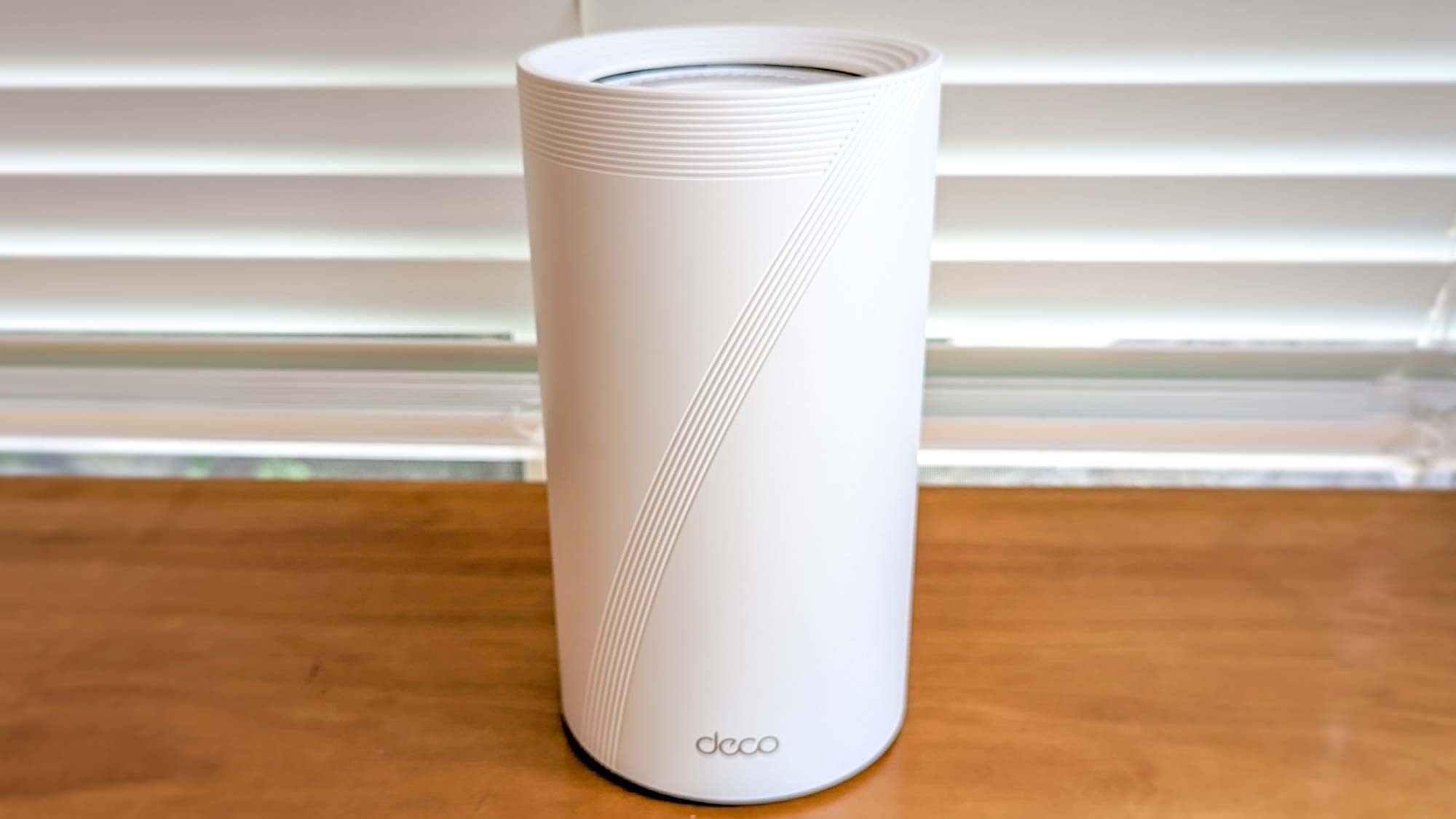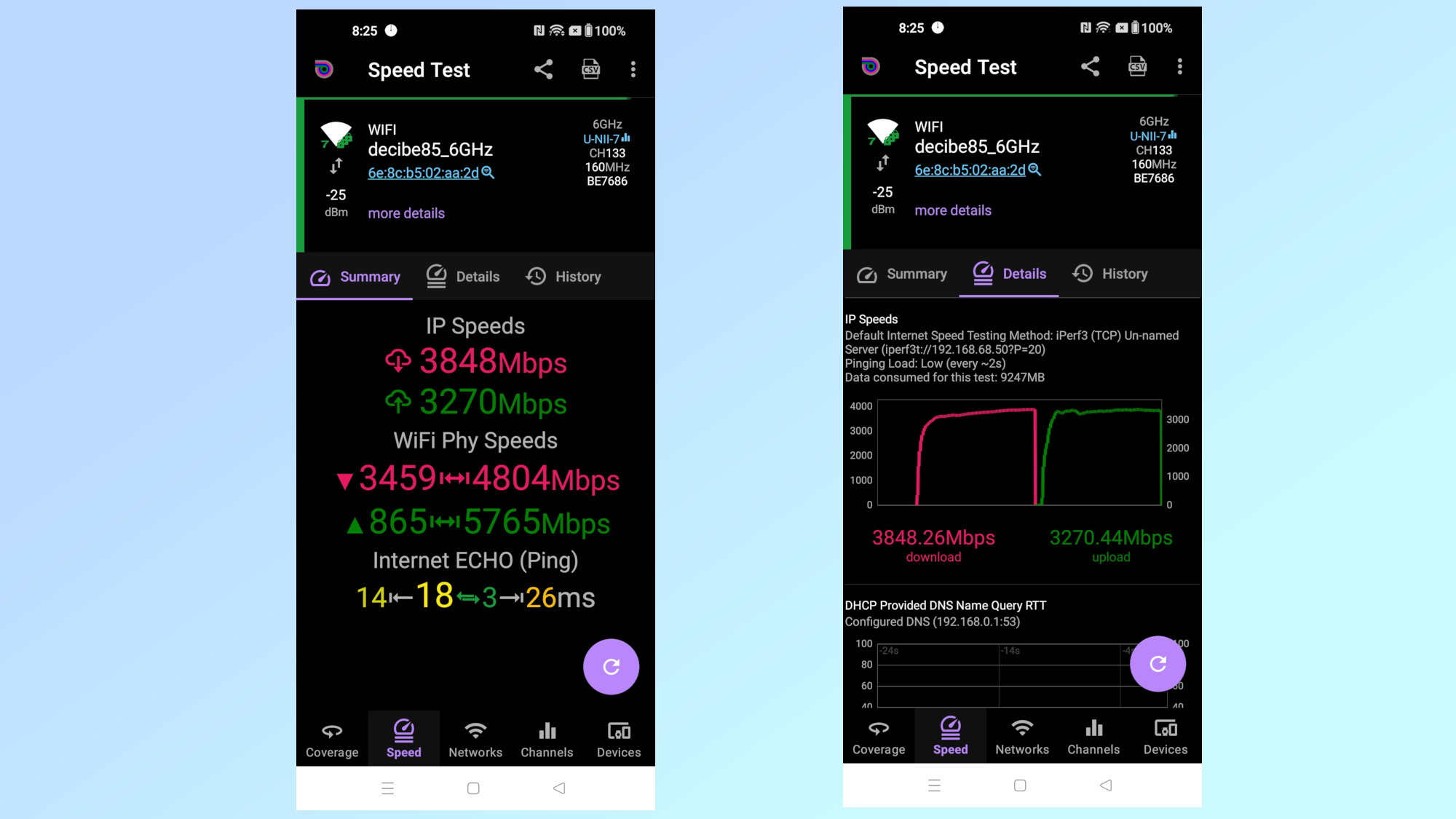I just tested the world’s first Wi-Fi 7 router — and the results are very impressive

With every new Wi-Fi standard comes the extra speed and features we expect, but also a transition period when all the pieces needed aren’t quite in place. After spending a week testing and living with the TP-Link Deco BE85, the first Wi-Fi 7 router available, this notion rings true. The new spec moves a lot of data, codifies the good things from Wi-Fi 6E and adds a few extra goodies, like super-wide 320MHz data bands.
On the other hand, it’s like a house under construction with a foundation and walls but no roof because there’s only one Wi-Fi 7 device that can take advantage of its abilities. I previewed the Deco BE85 with a OnePlus 11 smartphone that has built-in Wi-Fi 7 and gave them both a good workout. Here’s what I found out.
Testing the TP-Link Deco BE85

To outward appearances, the cylindrical white Deco BE85 devices look like scaled-up versions of earlier Deco mesh units like the Deco XE75. I love the array of wired Multi-Gig input WAN choices: ports for a pair of 10Gbps and a pair of 2.5Gbps wired inputs along with an SPD+ fiber optic input. Few will have access to these top-speed broadband choices but it’s nice to know the router will be ready when they become generally available.
I recorded peak Wi-Fi 7 download speeds of 3.85Gbps at 5 feet. That’s more than triple the throughput of Netgear’s Nighthawk RAXE500’s 1.15Gbps over the 6GHz band using Wi-Fi 6E.
There may be only one Wi-Fi 7 device around, but Android is ready with a notification bar “Wi-Fi 7” icon when it connects using the new protocol. The triband router is rated at a peak performance of 22Gbps, although as is the case with all Wi-Fi routers, it’s optimistic.

Using the iperf3 networking benchmark set to simulate 20 users, a Mac mini M2 with a 10Gbps Ethernet interface and Analiti’s Speed Test app on the OnePlus 11 5G phone, I recorded peak download speeds of 3.85Gbps at 5 feet. That’s more than triple the throughput of Netgear’s Nighthawk RAXE500’s 1.15Gbps over the 6GHz band using Wi-Fi 6E. This slowed to 2.55Gbps at 15 feet, though, showing the limited range of the 6GHz band.
It’s a lot of data and can feel like drinking from a firehose. It will help gamers, those working at home doing video calls and the more routine aspects of a connected life, like email, updating software and watching 4K videos. Best of all, it can support all of the above at once.
That said, the router has impressive range, though its top speed 6GHz band gave out at about 40 feet. After that, I needed to switch to the 2.4Ghz/5GHz mode, where it lost contact at 105-feet. That should be more than enough for the three-piece Deco BE85 mesh kit to cover the typical home with wireless data.
Get instant access to breaking news, the hottest reviews, great deals and helpful tips.
Ironing out the kinks
The Deco BE85 looks great and came in what appears to be the final packaging. Still, there were rough edges, and the Deco BE85’s software is a work in progress with features that aren’t quite ready for prime time and bugs that need to be squashed. The router has been designed to automatically set the widest channel width available, which is a nice touch, but I prefer the ability to manually pick the channel and its data width setting.
It also lacked many of the customization options I take for granted, like adjustable transmission strength to keep neighbors from poaching my bandwidth and a smart connect mode that combines all three bands into a single network name. It’s more than a convenience because the router should be able to automatically pick the right frequency band to optimize the data speed. For the Deco BE85 router, I needed to pick between 6GHz or a combination of the 2.4- and 5GHz networks.
The first of many Wi-Fi 7 routers

The best is yet to come with an anticipated firmware upgrade in the coming weeks that will likely make the Deco BE85 ready for the market. That’s not all, because a quad-band Deco BE95 is on the way as well with a pair of high-speed 6GHz bands. It will be rated at a top speed of 33Gbps.
With high-performance traditional routers on the way, I’m happy that though this router’s speed is very impressive, it is an indication of where the performance of Wi-Fi 7 is heading and not the final word on the subject. In other words, for now, the Deco BE85 remains a tease. When the new firmware comes out and the mesh Wi-Fi system goes on sale, I’ll be back with a full review. Until then, I’ll just have to content myself with my taste of a faster future.
More from Tom's Guide
- 5 reasons you should upgrade your Wi-Fi router
- The best Wi-Fi extenders push your router's signal farther
- What is a mesh Wi-Fi router, and do you need one?
Brian Nadel is a freelance writer and editor who specializes in technology reporting and reviewing. He works out of the suburban New York City area and has covered topics from nuclear power plants and Wi-Fi routers to cars and tablets. The former editor-in-chief of Mobile Computing and Communications, Nadel is the recipient of the TransPacific Writing Award.

